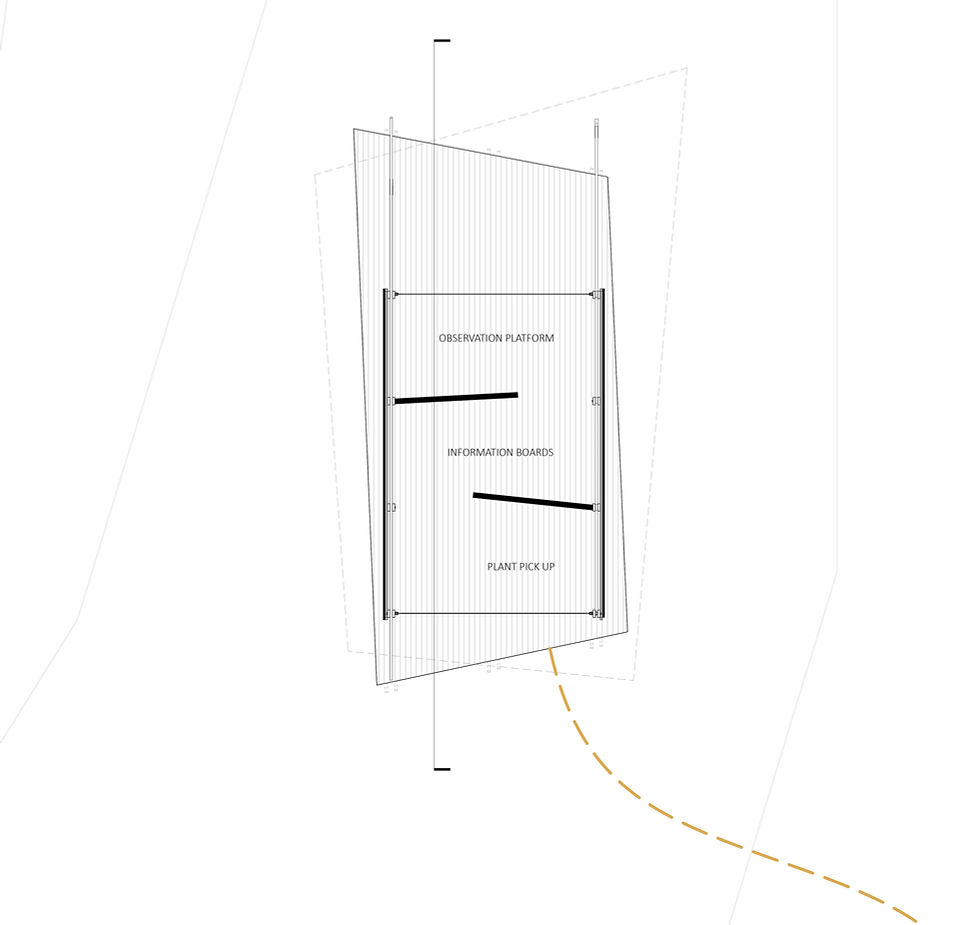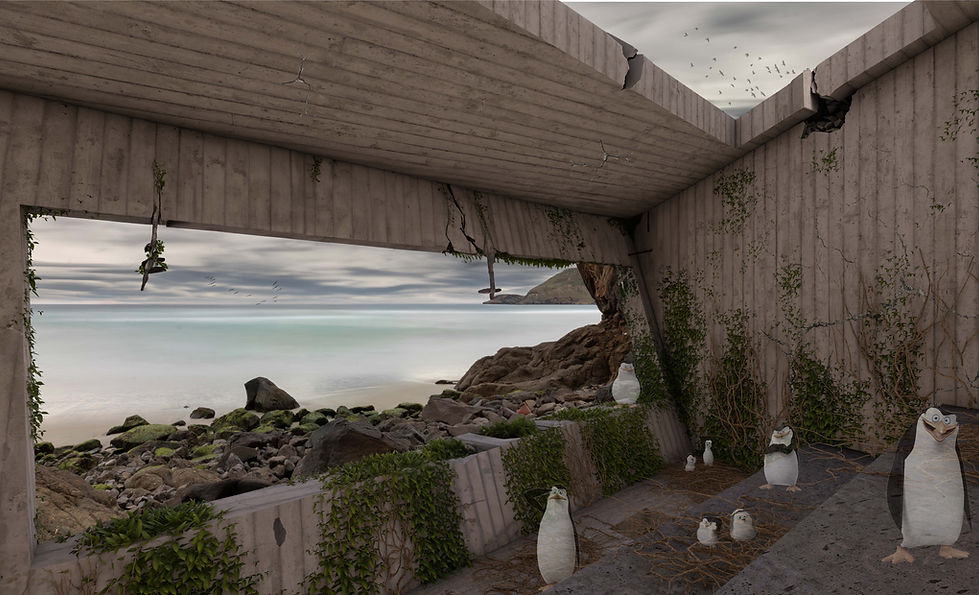
Wild Side
Designer Nicolas Sharp
Supervisor Mick Abbott
Date November 2023
Level of Education Four
Project Landscape Architecture














OTAGO PENINULA COASTAL TRAIL AND REFORESTATION PROJECT
The Otago Peninsula, known for its rich history, exhilarating adventures, and breathtaking landscapes teeming with wildlife, has witnessed transformation with the encroachment of private land ownership. In this process, a cherished pre-European Māori travel route has been lost to time. This ancient trail wound its way through the sand hills of St Clair, alongside serene lagoons, over the Tomahawk Hills, down into the enchanting Sandfly Bay, up over Sandymount, along Hoopers Inlet, Wickliffe Bay, and onwards to the Kaik. The route extended to Heyward Point and meandered along the northern coastline toward Waitati.
WILD SIDE is a landscape design project which aims to tell the story of this historical trail. It commences with the creation of a three-day cycling or extended hiking coastal trail, spanning from St Clair to Tairoa Heads, intentionally inviting people to slow down, explore and savor the hidden wonders of the Peninsula’s coastline.
Central to this landscape design is the establishment of a comprehensive trail network on the coastal side of the Otago Peninsula. Over a 40-year period, the objective is to restore the coastal hills to their pristine, rugged state that predates human presence, reviving the region’s natural beauty.
Within the architectural facet of this project, observation hides strategically placed at key points of interest such as Sandfly Bay, Penguin Beach, and a few remaining gun emplacements. These hides would be maintained as a community and serve as repositories for plant saplings, allowing visitors to participate in the rewilding efforts as they depart. An intriguing aspect of the hide design revolves around the concepts of permanence and impermanence.
Some hides, like the one at Smails Beach, are design for long-lasting use. Inspired by the region’s distinctive form of basalt columns, these hides are constructed entirely from concrete, with the intention that nature will gradually reclaim them. This concept is particularly exemplified at Smails Beach, where, as sea levels rise, the hide could transform into an ideal habitat for the frequent little blue penguin sightings in the area.
In contrast, impermanence is embraced in the design of temporal hides. These hides are designed to be swiftly assembled and relocated to new sites. As planting around these hides is completed, they are dismantled, leaving only the foundational piles and floors, which transform into simple viewing platforms. This approach not only facilitates mobility but also necessitates the creation of new trails to access these temporary hides. As a result, a more extensive network of trails unfolds, enabling visitors to explore the hidden corners and treasures of the Peninsula.
A mobile app enhances the trail experience in three key ways. First, it offers a secure phone slot at observation hides for capturing and sharing landscape and wildlife photos, creating a narrative of changing seasons and landscape transformation. Second, it uses a ‘walk with me’ mode to take you to your plants dedicated location to be planted. Lastly, it enables users to revisit planted sites, fostering a sense of stewardship and a stronger connection to the restored natural surroundings.
In summary, the WILD SIDE Landscape Design Project aims to restore a lost Māori travel route and revitalize this historically rich region. By creating a three-day coastal trail and an extensive trail network over 40 years, it reconnects people with the Peninsula’s natural beauty. Observation hides, some designed for longevity and others for impermanence, enrich the experience. A mobile app complements the project by allowing users to capture and share their encounters, follow planting instructions, and revisit their contributions. This project is a multifaceted endeavor to rejuvenate the Peninsula’s heritage and natural landscapes.
